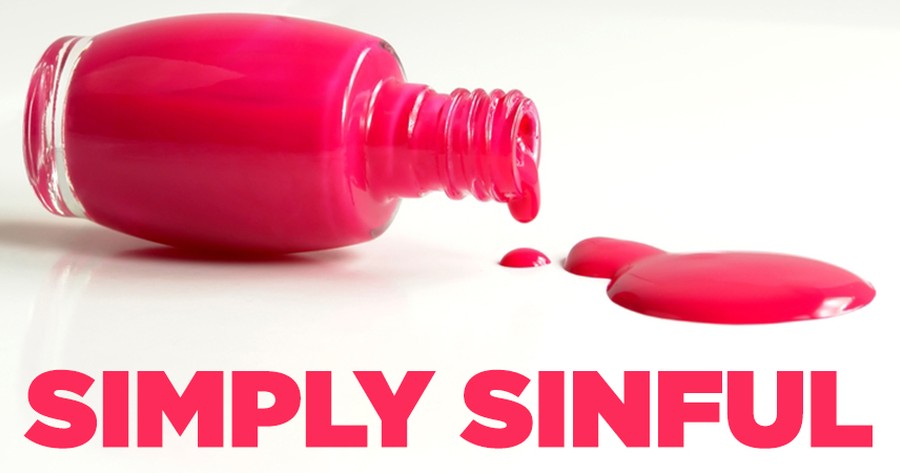I was taking much longer in the toothpaste aisle than I'd planned. I couldn't find my regular brand, and as I scanned the shelves, I felt like I'd entered a world of unlimited choices. I was deep in thought when I bumped into the cardboard display and looked up to see in bold font:
"Sinful Colors!"
My mind was still hazy with toothpaste choices, so I thought I was having some kind of weird word confusion. Sinful color didn't seem like a moral possibility. The toothpaste decision would have to wait—my curiosity was piqued by this Sinful Color fingernail polish display.
After checking out the varieties offered, I decided that sinful colors apparently aren't any different than the "non-sinful" colors I have at home. They looked like your typical shades of pink, violet, a few muddy colors, some wines, an odd assortment of blues . . . none looked really naughty.
This would be funny if it weren't so sad. It's sad because sin is such a big seller. The marketing gurus behind this brand think that "Sinful Colors" will attract buyers simply by inserting the idea of sin.
If sin's disguise could be ripped away, its attractive package would be seen for the poisonous corruption it is and there would be no takers.
Standing in the toothpaste aisle, I wanted to weep (seriously). I grieve for a world that believes the lie that forbidden fruit satisfies, that doesn't know that sin's reward is death, and that its nature is bondage. I'm brought to tears when I realize that advertisers know what people want—and this was just another example (one in a very long line) of our culture's hunger for depravity:
"Therefore God gave them up in the lusts of their hearts to impurity . . . And since they did not see fit to acknowledge God, God gave them up to a debased mind to do what ought not to be done. . . . Though they know God's righteous decree that those who practice such things deserve to die, they not only do them but give approval to those who practice them." (Romans 1:24–32)
But if sin's disguise could be ripped away, its attractive package would be seen for the poisonous corruption it is, and there would be no takers. That is the irony of sin.
Just as darkness is the absence of light, sin is the absence of true beauty.
When our children were younger and we watched the movie, The Lord of the Rings, I remember leaning over to my son when we got our first glimpse of the hideous face of Gollum. I whispered (a bit too loudly for a public theatre), "Son—that's what sin really looks like!"
If there really was such a thing as "sinful colors," they wouldn't be made with the rainbow's vibrant hues. "Sinful colors" would all be the same drab colorless tone. Just as darkness is the absence of light, sin is the absence of true beauty.
I'm thinking this advertising slogan is a total oxymoron. What do you think?


Join the Discussion